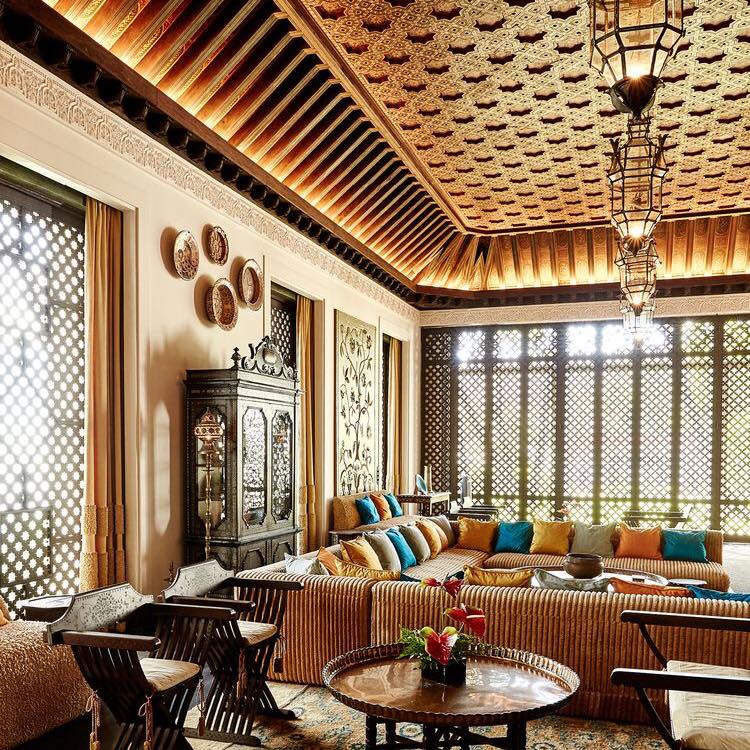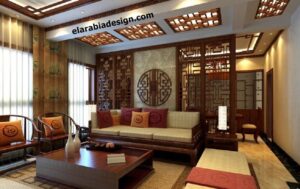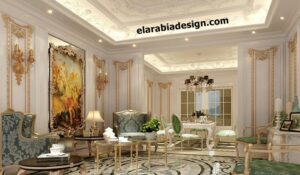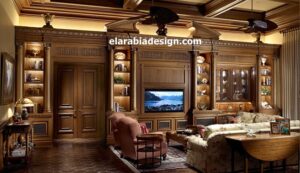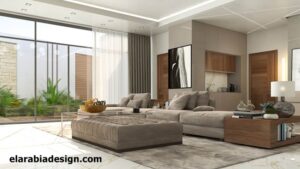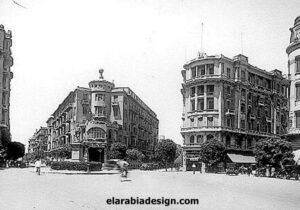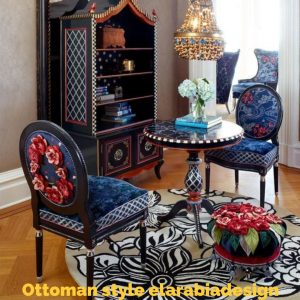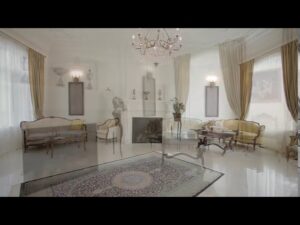محتوي المقال
Models derived from the Islamic style in interior design
These models are similar in the Islamic style in terms of interior design and design style, and they differ in their details and basic elements due to the difference in the local culture and the difference inherited from the previous and surrounding civilizations.
The Islamic style in interior design is sought by many due to the development of Islamic architectural decoration throughout the ages, as the Islamic style spread successively after people embraced Islam, and after that many architectural styles appeared, which we will talk about today in detail.
But first, you know the answer to the question, why do I deal with the interior designer Mohamed Moumia without anyone else??
The answer is in this video
Advantages of hiring an interior designer, Mohamed Moumia:
Submission of suggestions: Mohamed Moumia works as a professional interior designer to present his innovative and creative proposals to make optimal use of the interior spaces. He has experience and art in transforming ordinary spaces into distinctive and attractive places.
Follow-up and work: Once the best proposal is selected and approved by the owner, Mohamed Moumia works on the project continuously. Carefully follows up on the project and ensures that the design is executed in an accurate manner according to the owner’s vision.
Submitting Suggested Modifications: Mohamed Moumia knows that interior design projects often need modifications to achieve the desired result. Therefore, he works with the owner to determine the number of modifications that are acceptable after the completion of the project, and works to implement the modifications in a timely manner.
Delivery: Upon completion of the work, Mohamed Moumia presents the project in the form of a visual design file, such as a PDF containing collages showing the final design. It is also possible to submit a short video showing the design in 3D, and gives a clear idea of the final project.
Commitment to style and integrity: Mohamed Moumia ensures that the general architectural style of the area or space being designed is maintained. It also pays great attention to safety and security factors, ensuring a safe and comfortable indoor environment.
Experience and Distinction: Mohamed Moumia has more than 18 years of experience in the field of interior design. He is an accredited Egyptian TV designer, with an excellent reputation and proven experience in his field.
In short, Mohamed Moumia represents a distinguished and professional interior designer with creativity and experience in transforming interior spaces into beautiful and functional spaces. Seeks to achieve the owner’s vision and to provide projects that meet his needs and exceed his expectations.
call now

Umayyad style in Islamic style
- It is the first Islamic style to appear, and although it was greatly influenced by the Byzantine civilization, it modified the forbidden forms and dyed all designs in an oriental Islamic color.
- Where decorations spread throughout the rooms and corridors on the walls and floors.
- Foremost among them are geometric motifs, non-curved longitudinal moldings, and arches, especially in the doors and courtyards of houses.
- Wherever we look, we find the distinctive aesthetic vision in these designs, where nature with all its elements is the first inspiration for the Umayyad designer.
- Where mosaics and floral motifs are scattered throughout the design scene.
- They also relied on natural resources to ventilate spaces and decorate homes and palaces.

Andalusian style in Islamic style
- It is an extension of the Umayyad style, the Islamic style in interior design, but it is more sophisticated and attention to minute details, which indicates the gentle taste of the Andalusian designer.
- For example, the inscriptions were very diverse, as the art of filigree appeared, that is, the use of vegetable decoration with elaborate density, as well as the arabesque, which is the geometric decoration intertwined with multiple angles.
- The number of arches reached nine, and Andalusian designers made muqarnas from stucco and ivory ceilings inlaid with various geometric and plant motifs.
- Andalusians used ponds, running canals, and fountains in gardens, squares, and palaces for decoration and cooling.
Iranian style (Persian)
- Which is distinguished by the accuracy of its engravings and dazzling details, in addition to the well-thought-out balance of colors through careful and skillful color mixing.
- Iranian designs are based on floral and epigraphic motifs, as well as engravings and depictions of living creatures.
- It is no secret that the splendor of Iranian textile decorations, especially the luxurious Iranian carpets, with its attractive patterns and comfortable colors, as well as silk and embroidered fabrics.
- As for utensils and artifacts, they are mostly made of pottery, metal, copper or bronze, inlaid with silver in all its splendor and creativity.

Moroccan style
- The development of this style was slow, unlike the rest of the models, due to the poor economic and political conditions in the places where it spread, most notably the Maghreb in particular (Seville, Granada, Marrakesh).
- And when we look at his designs, we find the different colors, pious and warm, in addition to the various inscriptions that dominate the Moroccan style admirably.
- These inscriptions are straight, clear and simple without any complexity even with their few curves.
- It spreads on walls, floors, windows, doors, and even furniture and carpets.
- The materials of this style also vary, from plaster to glass and pottery, through solid and decorative wood in the furniture, various metals in the lamps, and mosaics on the walls and floors.
- Which gives the Moroccan style beautiful and attractive details.
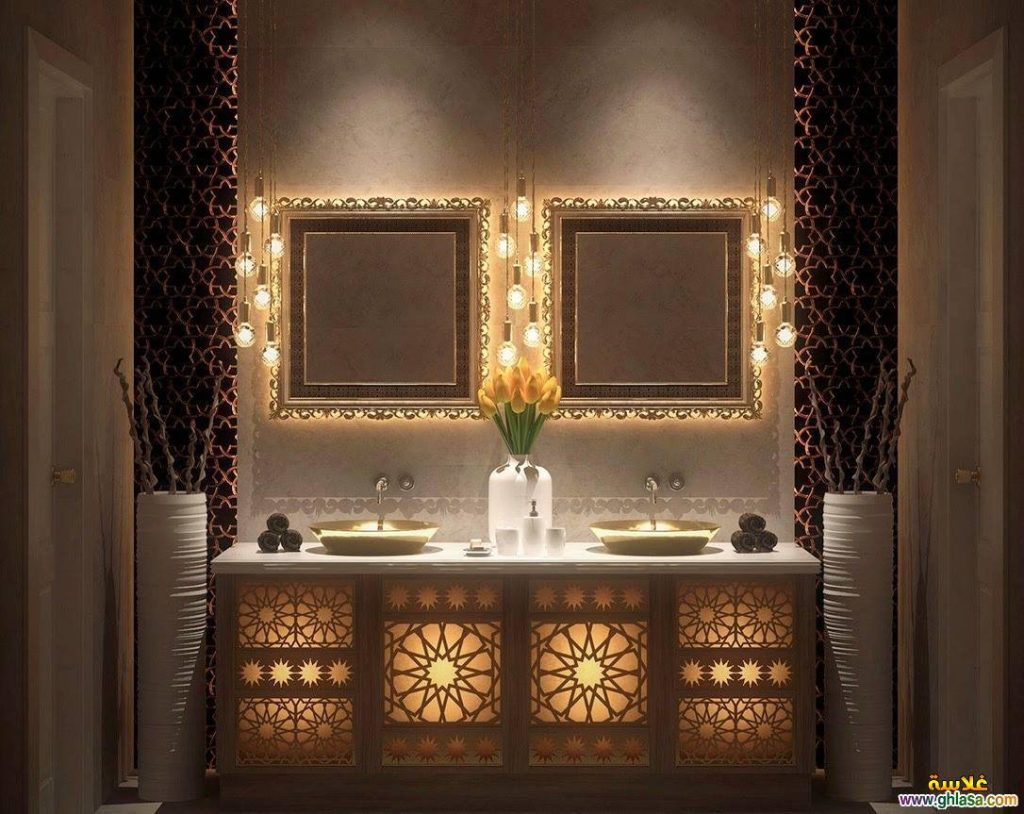
Mughal style (Indian)
- The oriental influence is evident, whether in arches, inscriptions, or handmade decorations, and its distinctive bright colors.
- As for the pillows and fabrics, they are silky in cheerful colors, and depend mainly on wood, ivory and copper pieces, as well as on green plants as indispensable elements in the design scene.
- The Islamic style in interior design differed over its wide geographical spread, but it was always a design masterpiece that moved buildings and rooms from dryness and emptiness to beauty and creativity.
- Thanks to Islamic designers from different design directions, Islamic art has become a timeless art thanks to their mastery and great attention to all these details.
- We at Vogue Design follow in the footsteps of these creators to make your rooms and homes a masterpiece that simulates Islamic art in all its styles and directions and talks about a lot of beauty and elegance.
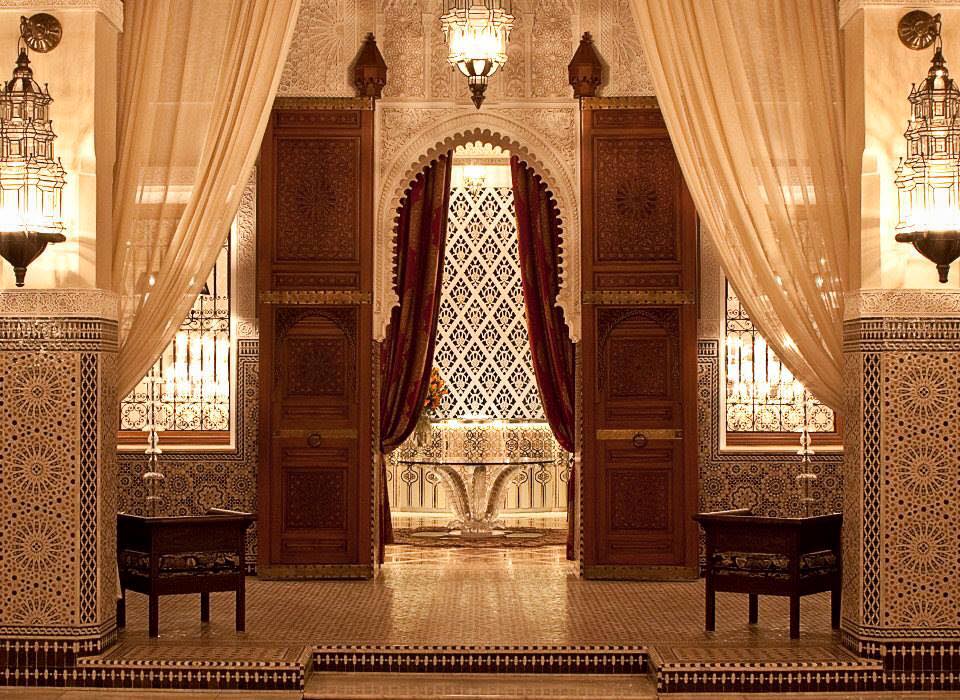
Residential architecture
Among the most prominent examples of the Islamic style in the interior design of residential architecture in the Umayyad era is the Western Palace of Al-Hayr in the Levant desert in central Syria, which is distinguished by its doors and towers, in addition to the city of Al-Rusafa and Al-Mushta. A palace in southern Amman, as well as from the Umayyad era Al-Aqsa Mosque in Jerusalem.
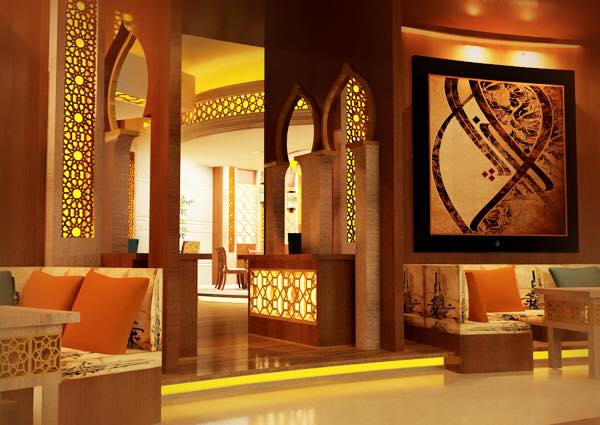
Abbasid era
- The Samarra Mosque is one of the most distinguished buildings of this era.
- It is topped by a large minaret, and its shape resembles the Assyrian ziggurat.
- It was in this era that he began to look at the layout of the city in general rather than at each building individually. The city was planned in a circular shape, the city of Baghdad, and it was called the Round City.
- It contains four entrances, including the Khorasan Gate, the Basra Gate, and the Kufa Gate.
- We see the Abbasid style in Egypt, where Ahmed Ibn Tulun was appointed ruler of Egypt by the Abbasids and the transfer of Abbasid architecture in Iraq to Egypt.
- It is the mosque named after him, and it is unique with its famous minaret and the vocabulary of Islamic architecture.
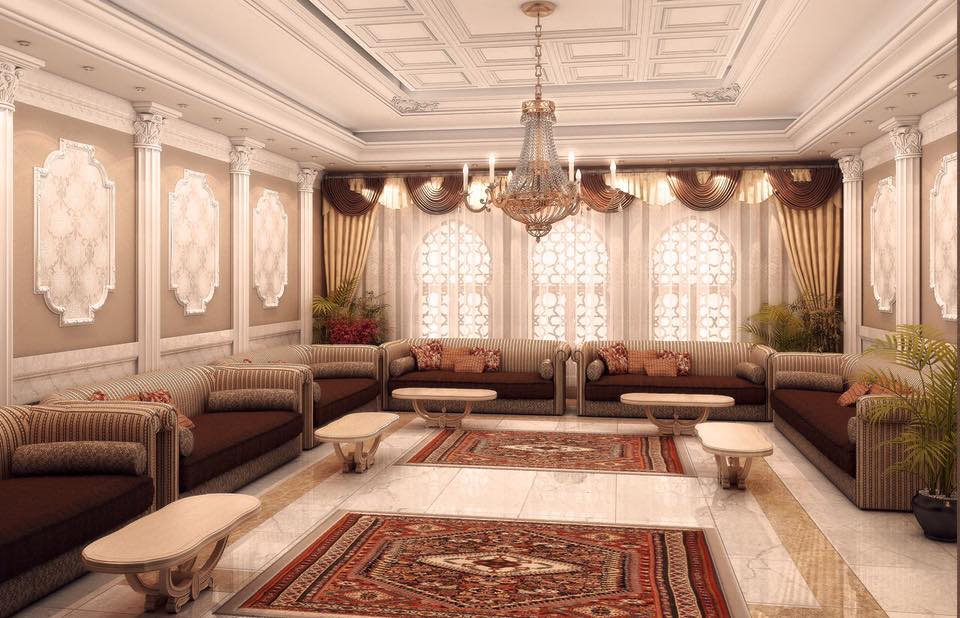
Islamic culture
- Our homes In today’s article, we talk about the Islamic style in interior design, which is an extension of who we are and reflects who we are.
- The most important thing that Muslims want for their homes is to be a mirror of cleanliness, beauty, warmth and love.
- Therefore, Islamic architecture is characterized by its rich history of creative ideas, skills and technology that drew inspiration from multiple cultures to achieve its goal.
- Where Muslims played an important role in the development and reformulation of these methods and art forms, to be independent of their personality away from traditions.
Rules of modern Islamic style interior design
- The first rule of Islamic style in interior design is that the design plan should not include any pictorial representation.
- In the sense that no form of human or animal depiction is used, as well as the absence of free-standing statues or animal models in furniture or any of the accessories.
- Instead, we will use abstract art, landscapes, or Islamic calligraphy.
- I see that Islamic architecture varies between the use of decorations in sharp colors and the use of simple lines in earthy colors.
- In fact, Moroccan architecture, with its exotic, opulent, and contemporary character, can be described as a true traditional blend.
- There are many countries that were strongly influenced by Arab architecture, such as Spain, Portugal and France.
- Inspired by many Moroccan designs that blend Berber and Islamic styles.
- Modern Islamic interior design reflects a diverse, rich and traditional history.
- To achieve this in modern designs, we need to use subtle patterns with thin lines.
- Most Muslims consider green to be an Islamic color.
- Most also prefer brown over black when choosing a neutral color.
- Black has long been associated with funerals and death while brown is warm and inviting.
- And like all other styles, color is time dependent.
- Nowadays we find that the most popular colors in decorating modern Arab Islamic homes are blue, gray and black.
- Featuring intricate carvings, arched doorways, and colorful textiles, it’s no surprise that this interior design has become so popular all over the world.
- The photos in this post represent some of the most impressive and vibrant examples of modern Islamic interior design.
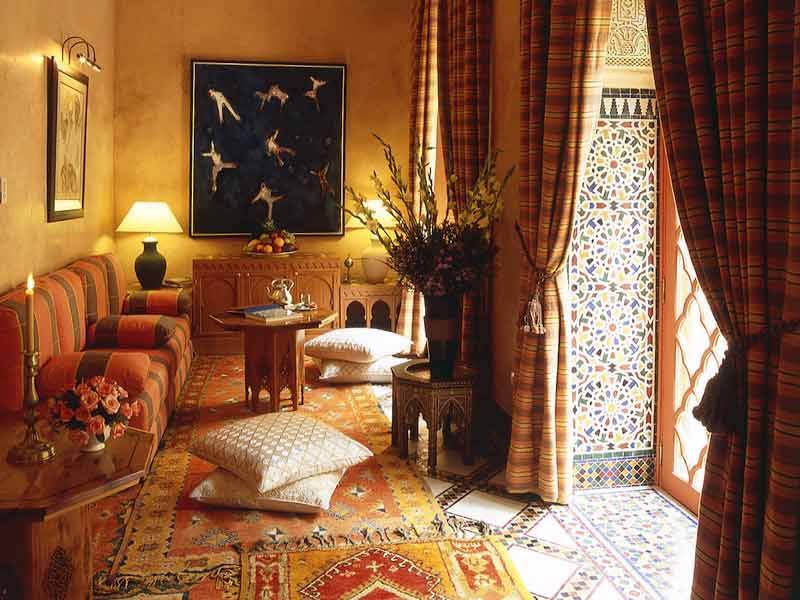
We advise you to know the difference between an interior designer and other?
- Interior designer job The interior designer is responsible for designing and utilizing the interior spaces of a home to meet the basic needs of its residents.
- That is, it depends on employing the place appropriately to meet the purpose. It is typical for an interior designer to have an associate degree in their field.
- Interior design is taught in the Colleges of Fine and Applied Arts and Architecture. Therefore, he relies on academic science in the home design process.
- The reliance of interior designer, interior designer Mohamed Moumia, on engineering principles in his work does not mean that he ignores the aesthetic form.
- As one of his tasks is to design the decoration and choose the style as well, as this matter falls within the goal of employing the spaces that he achieves.
- As for the interior designer, he is the person who revives the aesthetic and artistic side of the interior design.
- He cares more about choosing colors, designing furniture, and adding aesthetic elements.
- Therefore, we advise you to contact elarabiadesign

The Islamic style in interior design, no matter how old it is, has its splendor and has followers, especially our brothers in the Gulf. They give it a measure of attention, but in their homes and companies, you find them choosing it in their new homes, but it will be a bewilderment as to who will assume that responsibility….
The responsibility of design and implementation has become the subject of non-specialized decoration companies that have filled the world….
Therefore, we recommend that you do not obey these companies and go to Elarabiadesign, which has a history>
Finally, why do you deal with ElarabiaDesign?
- The company is under the leadership of interior designer Mohamed Moumia, not just an investor.
- An interior designer, not another engineering major.
- He has his fame on Egyptian television, and therefore his reputation must be preserved.
- The variety of projects that have been designed and supervised.The company supervised residential, administrative, medical, commercial, restaurants and other projects.
Watch this video at elarabiadesign>>>>
call now
what is Architecture styles?
Architecture styles are standardized approaches to organizing and designing software systems. They describe how software components interact and the way they are organized into layers, which can be used to guide the design process. Some common architecture styles include:
Microservices architecture
Client-server architecture
N-tier architecture
Service-oriented architecture (SOA)
Event-driven architecture
Model-view-controller (MVC)
Each architecture style has its own strengths, weaknesses, and trade-offs, and the appropriate choice of architecture style depends on the specific requirements of the software system being built.
what is Elements of Islamic architecture?
Islamic architecture refers to the architectural styles and designs developed in the Islamic world, from the 7th century onwards. Some of the key elements of Islamic architecture include:
Calligraphy: Incorporation of Arabic calligraphy, often in the form of verses from the Qur’an, as an ornamental element.
Geometric patterns: The use of intricate geometric patterns, often arranged in repeating motifs, as a decorative feature.
Domes and arches: The use of domes and arches to create large, open spaces and to structure buildings.
Minarets: Tall, slender towers attached to mosques, used for the call to prayer.
Courtyards: The inclusion of open courtyards, often with fountains or pools, as a central feature of many buildings.
Muqarnas: Decorative, vault-like elements, often made of carved stucco, used to create the illusion of a three-dimensional geometric form.
These elements are often combined to create buildings and structures with a unique, recognizable aesthetic that reflects the cultural, religious, and historical heritage of the Islamic world.
how is Muqarnas?
Muqarnas is a form of decorative architectural element that originated in the Islamic world. It is a type of carved stucco or woodwork that creates the illusion of a three-dimensional geometric form, often in the shape of a stepped pyramid. Muqarnas is typically used as a decorative feature on domes, pendentives, and other curved surfaces, and is often arranged in repeating patterns to create a sense of depth and dimensionality.
Muqarnas is characterized by its complex geometry, with each unit consisting of several tiers of downward-facing projections, known as niches or cells, that are each smaller than the one above. The overall effect is reminiscent of honeycomb or stalactites, and the play of light and shadow on the surface of the muqarnas creates a dynamic and ornamental effect.
Muqarnas is a distinctive feature of Islamic architecture and is found in buildings and structures throughout the Islamic world, from Spain to Central Asia. It continues to be used as a decorative element in contemporary Islamic architecture and is considered a hallmark of the architectural traditions of the Islamic world.

